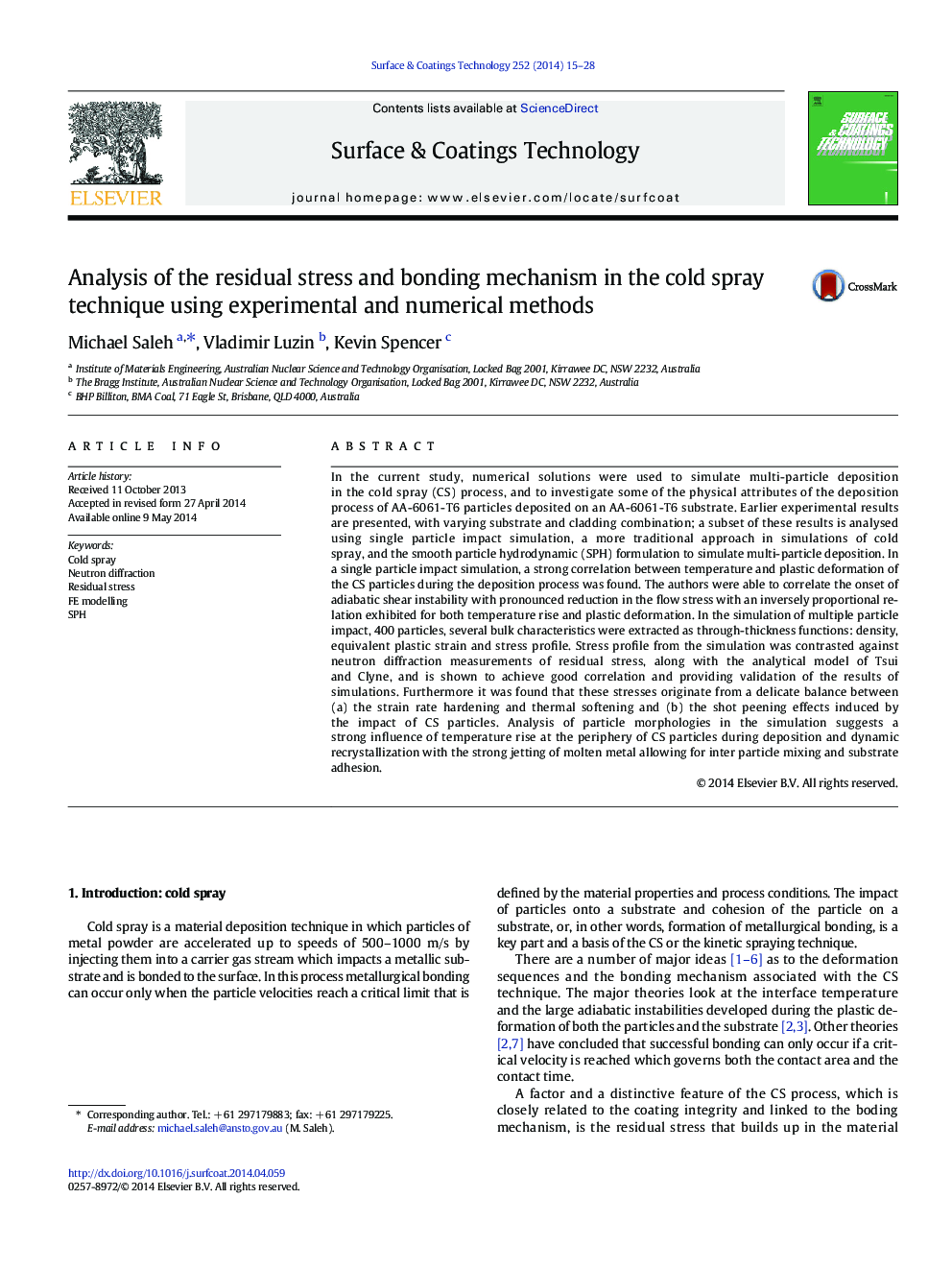| کد مقاله | کد نشریه | سال انتشار | مقاله انگلیسی | نسخه تمام متن |
|---|---|---|---|---|
| 1657473 | 1517626 | 2014 | 14 صفحه PDF | دانلود رایگان |
• The authors have investigated the cold spray (CS) additive manufacturing technique.
• Residual stress measurements using Neutron diffraction
• Modelling using smooth particle hydrodynamics and solid Lagrangian elements
• Results of modelling and neutron diffraction contrasted with Tsui and Clyne model.
• Large strains correlate with temperature gradients and dynamic recrystallization.
In the current study, numerical solutions were used to simulate multi-particle deposition in the cold spray (CS) process, and to investigate some of the physical attributes of the deposition process of AA-6061-T6 particles deposited on an AA-6061-T6 substrate. Earlier experimental results are presented, with varying substrate and cladding combination; a subset of these results is analysed using single particle impact simulation, a more traditional approach in simulations of cold spray, and the smooth particle hydrodynamic (SPH) formulation to simulate multi-particle deposition. In a single particle impact simulation, a strong correlation between temperature and plastic deformation of the CS particles during the deposition process was found. The authors were able to correlate the onset of adiabatic shear instability with pronounced reduction in the flow stress with an inversely proportional relation exhibited for both temperature rise and plastic deformation. In the simulation of multiple particle impact, 400 particles, several bulk characteristics were extracted as through-thickness functions: density, equivalent plastic strain and stress profile. Stress profile from the simulation was contrasted against neutron diffraction measurements of residual stress, along with the analytical model of Tsui and Clyne, and is shown to achieve good correlation and providing validation of the results of simulations. Furthermore it was found that these stresses originate from a delicate balance between (a) the strain rate hardening and thermal softening and (b) the shot peening effects induced by the impact of CS particles. Analysis of particle morphologies in the simulation suggests a strong influence of temperature rise at the periphery of CS particles during deposition and dynamic recrystallization with the strong jetting of molten metal allowing for inter particle mixing and substrate adhesion.
Journal: Surface and Coatings Technology - Volume 252, 15 August 2014, Pages 15–28
